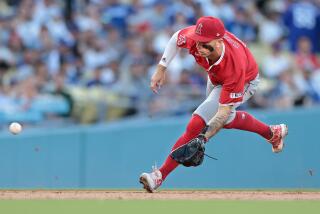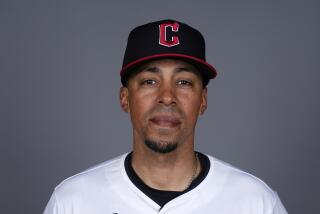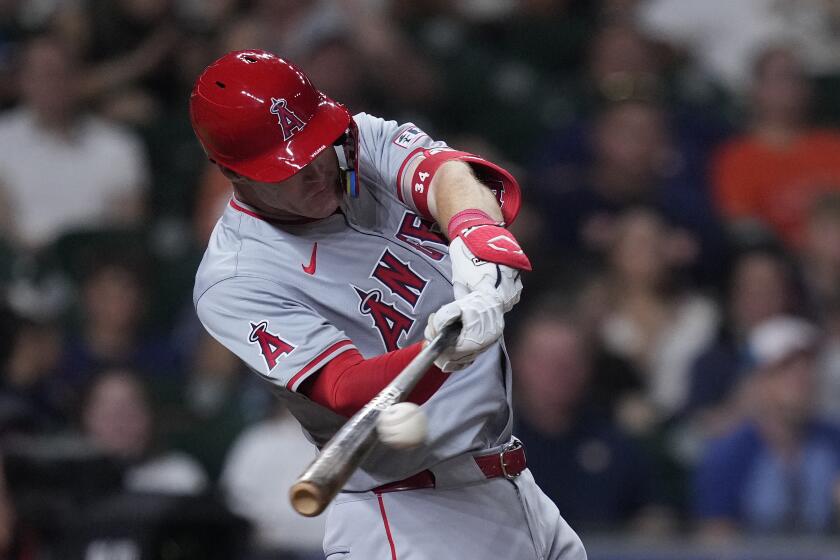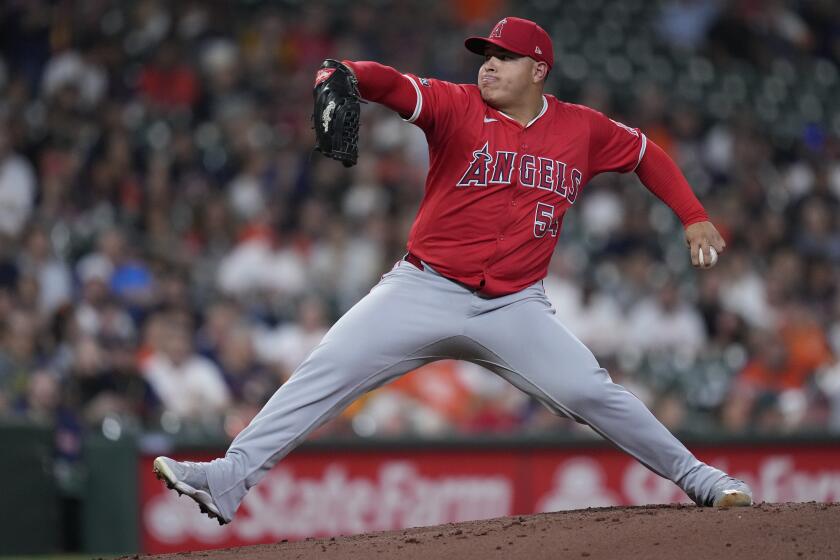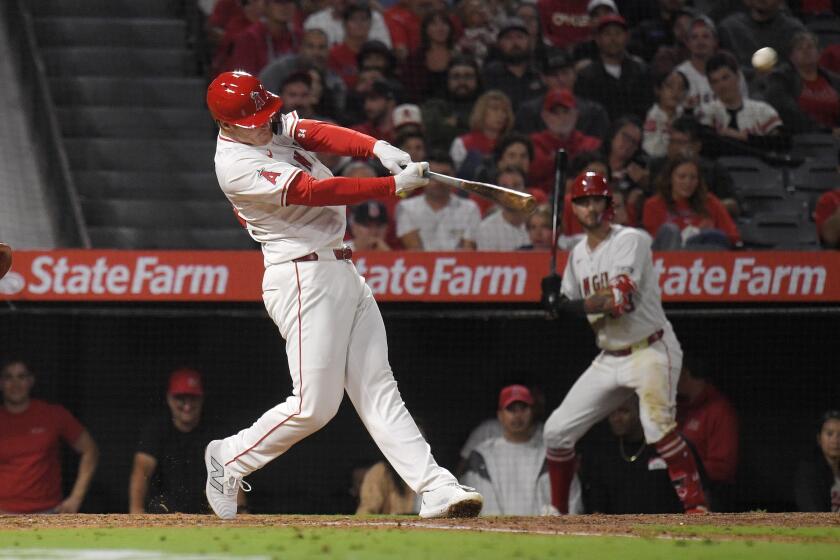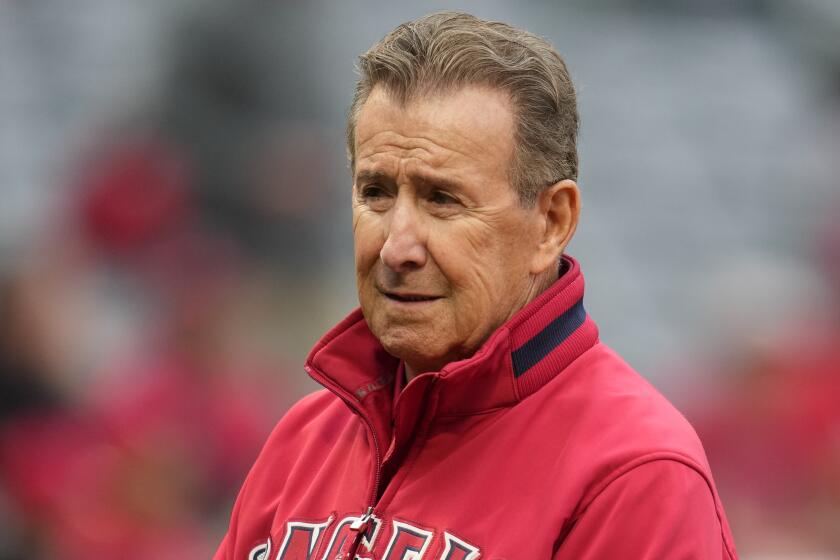Change in right field means fewer sluggers will hit the wall at Angel Stadium
At any given moment, there are 750 active players in the big leagues, and the Angels are making a change that will impact one of them far greater than any of the others.
Yet, for now, Kole Calhoun seems only moderately interested in and generally uninformed on a subject that will alter the way he does his job.
“I know as much about it as you do,” the Angels outfielder said. “It’s all hearsay until we can get there and see it.”
The topic? The most-discussed yellow line in franchise history, the Angels lowering the right-field home-run boundary in their home ballpark.
The line is being dropped to the height of eight feet from the previous 18 feet in the area of the out-of-town scoreboard.
As the team’s regular right-fielder, Calhoun is the Angel who must adjust to the new dynamic.
As the only everyday hitter who bats left-handed, he’s also the Angel who could most benefit from the move.
“It’s not really going to change anything we do,” Calhoun insisted. “You might get away with a couple you didn’t last year. But, other than that, you still have to go out and play the same game.”
Same game, sure, but with results that certainly will be different.
Based on three-dimensional trajectories provided by Statcast, a report on MLB.com determined that there would have been 17 more home runs hit in Angel Stadium in 2017 and 16 more in 2016.
The totals represent an 8.5% increase, which might not sound like a lot — unless it’s your job to prevent baseballs from clearing outfield walls.
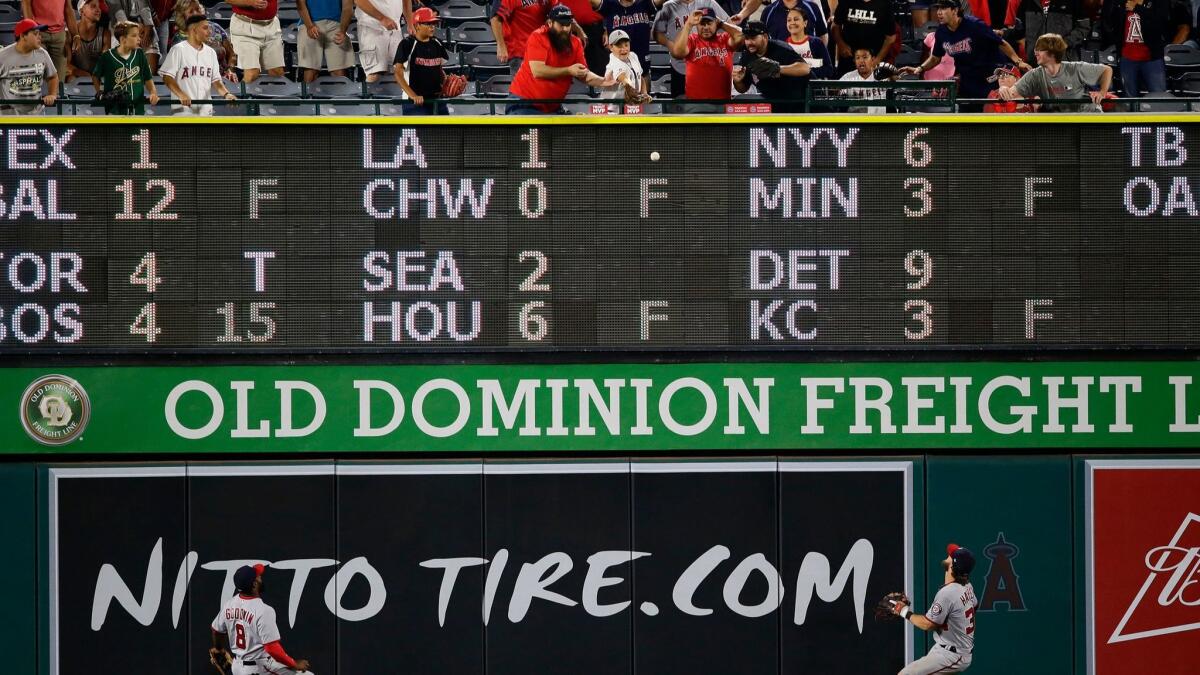
“It is what it is,” Angels reliever Blake Parker said, without specifying that, as a pitcher, what it is is perfectly dreadful.
“We’re going to have to deal with it, keep the ball down and get some ground balls,” Parker continued. “I’ve never seen a ground ball go over a wall.”
On defense, the line means Calhoun will have the opportunity to make homer-robbing catches at the fence, something previously impossible at home except for along the short walls that will continue to exist in both outfield corners.
Gone will be the option of simply turning to play caroms coming high off the wall. Now, Calhoun will have to aggressively pursue any drive that could clear the line.
“Hopefully,” Angels reliever Cam Bedrosian said, “Kole will be providing some highlights for everybody.”
Offensively, the Statcast numbers suggest Calhoun would have hit as many as six more homers the past two seasons combined, including four in 2016, when he finished with 18.
For a player coming off a year in which his batting average (.244) and slugging percentage (.392) both were career lows for a full season, the change could be arriving at the perfect time.
“I don’t remember hitting four of them out there [in 2016],” Calhoun said. “But I do know I have a few dings in that wall.”
When the change was announced last month, general manager Billy Eppler said the Angels “ran through some analyses internally” that evidently indicated the new height could aid the Angels’ home-field advantage.
He refused to offer specifics, explaining only that the team’s goal was to “create an environment that had a little more balance,” meaning the balance between being a more pitcher- or hitter-friendly ballpark.
However, the Statcast data indicate the Angels actually would have surrendered 11 of those 17 additional homers in 2017, a season in which they had the poorest home slugging percentage in the American League.
“The joke around here is that the league hates pitchers,” Parker said. “I guess the game wouldn’t be what it is without the fans. And the fans want to see homers hit.”
sports@latimes.com
More to Read
Go beyond the scoreboard
Get the latest on L.A.'s teams in the daily Sports Report newsletter.
You may occasionally receive promotional content from the Los Angeles Times.
